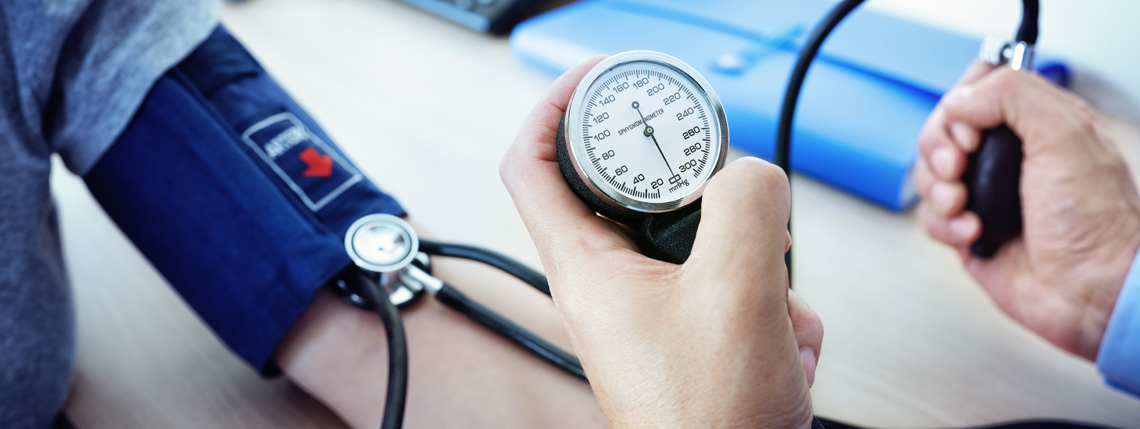Let’s get physical and keep our blood pressure healthy, says Professor Graham MacGregor, chair of Blood Pressure UK.
Being active not only lowers our blood pressure by keeping our heart and blood vessels in good shape but also reduces the risk of heart disease and stroke.
What’s more, it has countless other benefits too. Exercise strengthens the bones, improves balance and keeps our muscles and joints moving, which can help keep us active and independent in later life.
For most people, it is safe to exercise if they have high blood pressure – but it’s always a good idea for them to speak to their doctor or nurse before starting any new physical activity. Physical activity will cause blood pressure to rise for a short time. For most people, this is nothing to worry about and when they stop the activity it should quickly return to normal.
If their blood pressure is relatively high, their doctor or nurse may prefer to lower it with medicines before starting exercise. If it’s very high, they should avoid any new activity without talking to their doctor first.
What is the best exercise for high blood pressure?
Different kinds of exercise and activity have different effects on the body. If someone has high blood pressure, they should try to focus on activities that will help their heart and blood vessels. Aerobic activity is the type that helps the heart the most.
Helpful exercises – aerobic exercise
Good exercises to try are any aerobic exercises that get the heart, lungs, blood vessels and muscles working because they use the large muscle groups of the body, such as those in the legs, shoulders and arms. Walking, jogging, swimming and dancing are all good aerobic activities. Slow breathing and even transcendental meditation are also effective ways of bringing down blood pressure.
Exercises to avoid
Some other forms of activity are less helpful; for example, any exercise that is very intensive for short periods of time, such as sprinting or weightlifting. They raise your blood pressure very quickly and put too much strain on your heart and blood vessels. However, while these types of exercise aren’t recommended for those with high blood pressure, if these are some of your clients preferred type of exercises, you should consult with their GP and discuss modifications so you can coach these exercises safely
Helpful (and unhelpful) activities for lowering blood pressure
Activities that are good for blood pressure
- Cycling
- Brisk walking
- Swimming
- Dancing
- Tennis
- Jogging
Activities to avoid
- Weightlifting
- Squash
- Sprinting
Simple hand exercises could also help to reduce high blood pressure, according to a major review (in 2014) of more than 1,000 scientific studies by US researchers. They found that regular isometric handgrip exercises such as those used by golfers – essentially grasping and releasing an object – can reduce blood pressure readings by as much as 10%.
This week marks Blood Pressure UK’s Know Your Numbers! week, whereby the charity is calling for home blood pressure monitors to be made available on prescription to anyone who has been diagnosed with high blood pressure to help save the maximum number of lives from strokes and heart disease, as well as reducing the number of routine GP visits.
By getting the nation’s blood pressure under control via home monitoring and medication – especially at a time when access to overwhelmed GPs and other healthcare professionals is restricted during the pandemic – many thousands of lives could be saved from a stroke or heart disease. In fact, 10 million deaths per year are attributed to high blood pressure worldwide.
This ties in with the recent data from the Office for National Statistics, which shows that among those under 65 the number of deaths caused by high blood pressure is up by one third – this data comes amid concern that millions of patients went untreated for killer diseases during lockdown.
As an individual, having your blood pressure checked is the most important step you can take to reduce your risk of stroke, heart attack or heart failure. It could just save your life.
For more information visit bloodpressureuk.org
Facts about blood pressure from Blood Pressure UK:
- High blood pressure has no obvious signs or symptoms. The only way to find out if you have the condition is to have a blood pressure check.
- Untreated high blood pressure is the major risk factor for strokes, heart attacks and heart failure. It is also a major risk factor for kidney disease and dementia.
- A healthy blood pressure is a level of 120/80mmHg or less.
- A blood pressure of 121/81mmHg to 139/89mmHg is on the high side and lifestyle changes such as eating less salt and more fruit and veg, and losing weight if necessary, should be advised.
- If readings are consistently at or above 140/90mmHg, high blood pressure is diagnosed and action should be taken to lower it by leading a healthier lifestyle and, if necessary, by taking medication as directed by your doctor.
Blood Pressure UK’s top five tips for a healthy blood pressure:
- Cut down on salt – reducing your salt intake is the quickest way to lower your blood pressure. Don’t add it when cooking or at the table, avoid using stock cubes, gravy and soy sauce, check food labels and avoid processed foods high in salt – aim to eat less than 6g a day.
- Eat plenty of fruit and vegetables – at least five different portions every day.
- Watch your weight – try to reach the right weight for your height.
- Exercise regularly – 30 minutes five times a week is ideal.
- Drink alcohol in moderation – up to 14 units a week for both men and women (a glass of wine or a pint of beer is two to three units).







